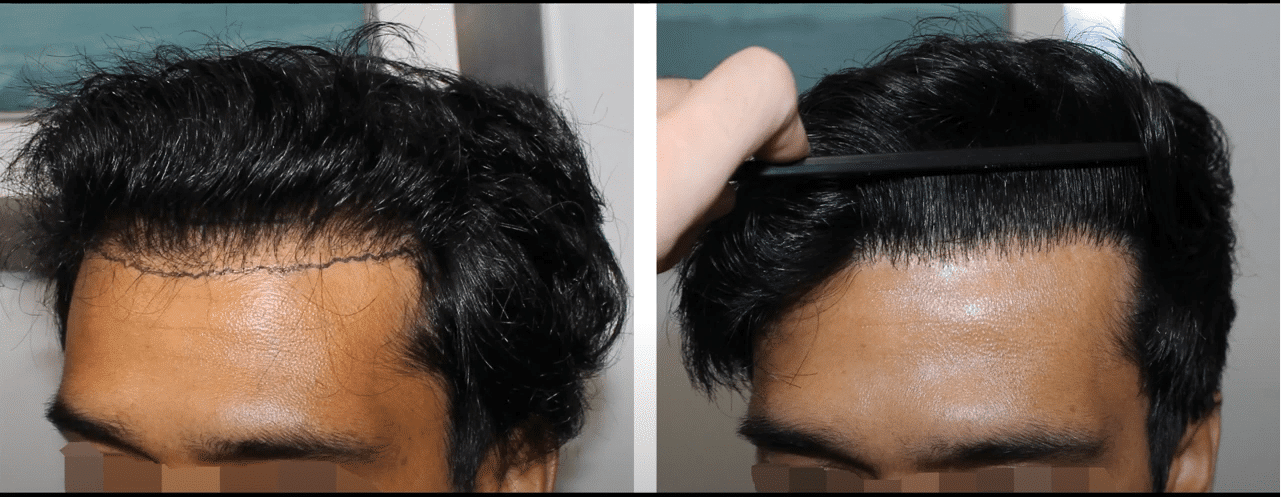What if I Need a Hair Transplant Repair?

“Hair transplant repair” is a subject no one likes to talk about. And who would? No one wants to believe that they will undergo a cosmetic procedure, like a hair transplant, to improve their appearance, only to need it “repaired” at a later date. Unfortunately, however, it does happen. But what are the reasons why a hair transplant may need to be “repaired?” What can be done to fix a poor hair transplant? Finally, what can one expect from a repair procedure?
Causes for Hair Transplant Repair
So, why would anyone need a hair transplant “repair?” I mean, any additional hair where there was not hair before should be a good thing? Right? Unfortunately, this is not always the case. There are several situations where a patient may come in seeking — and requiring — a repair procedure.
The first reason is outdated and old work. Thankfully, we have left the “plug” and “mini-graft” procedures of yesteryear and are now in the era of refined follicular unit hair transplantation via both the FUT (Follicular Unit Transplant) and FUE (Follicular Unit Extraction) techniques. However, we still very much see the wreckage from these old procedures today. Thousands upon thousands of these procedures were performed; many of which looked “okay” until patients started to lose more hair. Regardless of whether the results were obvious right away or years later, the bottom line is that many of these plug/mini-graft procedures produced poor results. And the reason why is right there in the title: “plug” and “mini-graft.” Unlike today’s procedures where microscopes are used to create “grafts” containing only individual follicular units — the natural groupings — older procedures transplanted small “clusters” or “clumps” of tissue containing multiple follicular units. These grafts were large, bulky, and needed to be inserted with large tools and placed far apart. The results were described by most as “pluggy” or like a “doll’s hair,” and cast the field of hair transplantation in a dark light for a long time. Additionally, the tools used to remove and insert these grafts often created visible scar tissue in the recipient area and lots of damage in the donor.
The second reason patients may need a “repair” is simply because the prior transplant want not sufficient. Even when done with modern methods, issues such as starting a hairline too low or too straight, not using the proper grafts in the right locations (IE not using single-hair follicular unit grafts in the hairline), or not transplanting at a high enough density often create a situation where a second procedure is necessary. We previously saw many more cases of outdated work requiring repair compared to modern, inappropriately performed procedures needing repair. Unfortunately, that has changed in the last few years. This is very likely related to the number of new or “part time” offices who have added FUE to their clinics. Typically this is done by purchasing a “turn key” FUE device or robot, and trying to perform a procedures with little knowledge or proper staff. Many times, these procedures are actually performed entirely by technicians with no doctor involvement — which is what we see from overseas clinics as well.
Can a Poor Hair Transplant be Repaired?
So now we know what causes a less-than-ideal hair transplant. But the “million dollar” question is: what can be done to fix it?
Thankfully, most patients have some option for repair. For patients who underwent outdated procedures, the best solution is typically performing a modern, dense pack hair transplant to camouflage the stalky, pluggy grafts and hide the prior scar tissue. If this is not an option due to lack of available donor area or the patient’s overall goals, sometimes we can use FUE punches to actually remove the offending grafts. Many times the toughest aspect of an outdated repair is the donor area; particularly in instances where “plug” grafts were harvested with large punches. During these procedures, punches like modern FUE tools, but upwards of 5x in size, were used to “core” out clusters of grafts from the back — IE cut out the plugs. The area was then left open to heal into a larger circular scar. In and of themselves, the plug scars weren’t too bad. The issue becomes when many plugs were removed and the donor area is covered in larger circular scars with sparse hair left between — imagine “swiss cheese.” Sometimes we can conservatively remove grafts from in-between the scars with small FUE punches, but this always runs the risk of thinning out the donor and making it impossible to cover the prior scarring. The hope is that a small number of plugs were taken or they were limited to a certain area, and we can harvest normally from the unaffected zones — particularly using an FUT harvest.
For patients who underwent modern work but it was not “up to par,” the solution is typically the same: more surgery. If low density or poor growth was an issue, the best solution is simply adding more hair. Oftentimes poor yield comes from FUE procedures as described above, so we like to switch these patients to FUT. This both conserves the donor area and greatly increases the chances of better growth. However, large FUE procedures can also cause massive thinning and patchiness in the donor area; this can create issues similar to the “plug” dilemma we discussed before. In situations where the hairline was started too low, we can sometimes extract these offending grafts using FUE tools and techniques. We can then start the new hairline at a more appropriate level — and with greater density and naturalness. Sometimes electrolysis is a good solution for removing these hairs as well.
The good news is that most repair patients have options. About 25-30% of our practice is repair cases, so you are not alone and there are a lot of people undergoing the same “fix.” We highly recommend consulting with a clinic capable of performing repairs — using both FUT and FUE — and with a strong track record to prove it.
What can you Expect from a Repair Procedure?
Below are several examples of hair transplant repairs we have performed at Feller & Bloxham Medical. These are just a few of the many successful repairs we have provided for our patients, and we are very proud of our track record with hair transplant repair. If any of these patients look like you or if you want to know your options, please do not hesitate to reach out.
________
Feller & Bloxham Medical, PC





